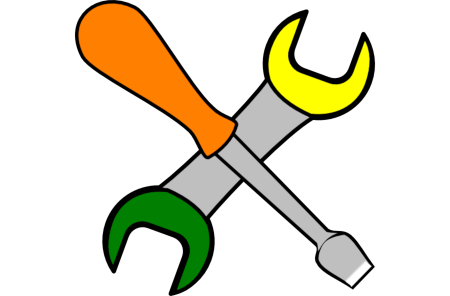 |
UtilsLite
Utilities for C++ programming
|
 |
UtilsLite
Utilities for C++ programming
|
Implement some operationn on quaternion. More...
#include <Quaternion.hxx>
Public Types | |
| using | real_type = T |
Public Member Functions | |
| Quaternion () | |
| Quaternion (real_type A, real_type B, real_type C, real_type D) | |
| void | setup (real_type A, real_type B, real_type C, real_type D) |
| void | print (ostream_type &os) const |
| real_type | operator[] (int i) const |
| void | conj () |
| void | invert () |
| real_type | norm () const |
| void | rotate (real_type const v[3], real_type w[3]) const |
| real_type | to_axis (real_type axis[3]) const |
| void | to_matrix (real_type mat[3][3]) const |
Implement some operationn on quaternion.
Quaternion Class
Represents a quaternion, which is a mathematical entity that extends complex numbers. A quaternion is defined as a quadruplet \( (A, B, C, D) \) of real numbers, often represented as:
\[ Q = A + B \mathbf{i} + C \mathbf{j} + D \mathbf{k} \]
Quaternions are widely used in 3D computer graphics and robotics for representing rotations and orientations due to their efficiency and ability to avoid gimbal lock.
Reference:
| using Utils::Quaternion< T >::real_type = T |
Type definition for the real number type of the quaternion.
|
inline |
Default constructor that initializes a null quaternion.
|
inline |
Constructs a quaternion with specified components.
| A | The scalar part of the quaternion. |
| B | The coefficient for \( \mathbf{i} \). |
| C | The coefficient for \( \mathbf{j} \). |
| D | The coefficient for \( \mathbf{k} \). |
|
inline |
Conjugates the quaternion:
\[ Q = A + B \mathbf{i} + C \mathbf{j} + D \mathbf{k} \]
The conjugate of \( Q \) is given by:
\[ \overline{Q} = A - B \mathbf{i} - C \mathbf{j} - D \mathbf{k} \]
|
inline |
Inverts the quaternion:
\[ Q = A + B \mathbf{i} + C \mathbf{j} + D \mathbf{k} \]
The inverse of \( Q \) is calculated as:
\[ Q^{-1} = \dfrac{ A - B \mathbf{i} - C \mathbf{j} - D \mathbf{k}} { A^2 + B^2 + C^2 + D^2 } \]
|
inline |
Computes the norm of the quaternion.
The norm of \( Q \) is defined as:
\[ \text{norm}(Q) = \sqrt{A^2 + B^2 + C^2 + D^2} \]
|
inline |
Accesses the \(i\)-th component of the quaternion.
| i | Index of the quaternion component (0 for A, 1 for B, etc.). |
|
inline |
Prints the quaternion to the specified output stream.
| os | The output stream where the quaternion will be printed. |
|
inline |
Applies a quaternion rotation to a 3D vector.
If \( Q \) is a unit quaternion representing a rotation of ANGLE radians about the vector AXIS, the result \( W \) of the rotation on the vector \( V \) can be computed as:
\( W = Q * V * \overline{Q} \)
| v | The input vector to be rotated. |
| w | The output vector that will hold the result. |
|
inline |
Sets the components of the quaternion to the specified values.
| A | The scalar part of the quaternion. |
| B | The coefficient for \( \mathbf{i} \). |
| C | The coefficient for \( \mathbf{j} \). |
| D | The coefficient for \( \mathbf{k} \). |
|
inline |
Converts a rotation from quaternion to axis format in 3D.
A rotation quaternion Q has the form:
\[ Q = A + B \mathbf{i} + C \mathbf{j} + D \mathbf{k} \]
where A, B, C and D are real numbers, and \( \mathbf{i} \), \( \mathbf{j} \), and \( \mathbf{k} \) are to be regarded as symbolic constant basis vectors, similar to the role of the "\f$ \mathbf{i} \f$" in the representation of imaginary numbers.
A is the cosine of half of the angle of rotation. (B,C,D) is a vector pointing in the direction of the axis of rotation. Rotation multiplication and inversion can be carried out using this format and the usual rules for quaternion multiplication and inversion.
| axis | An array that will be populated with the axis of rotation. |
|
inline |
Converts the quaternion to a 3x3 rotation matrix.
| mat | A 3x3 array that will hold the resulting rotation matrix. |